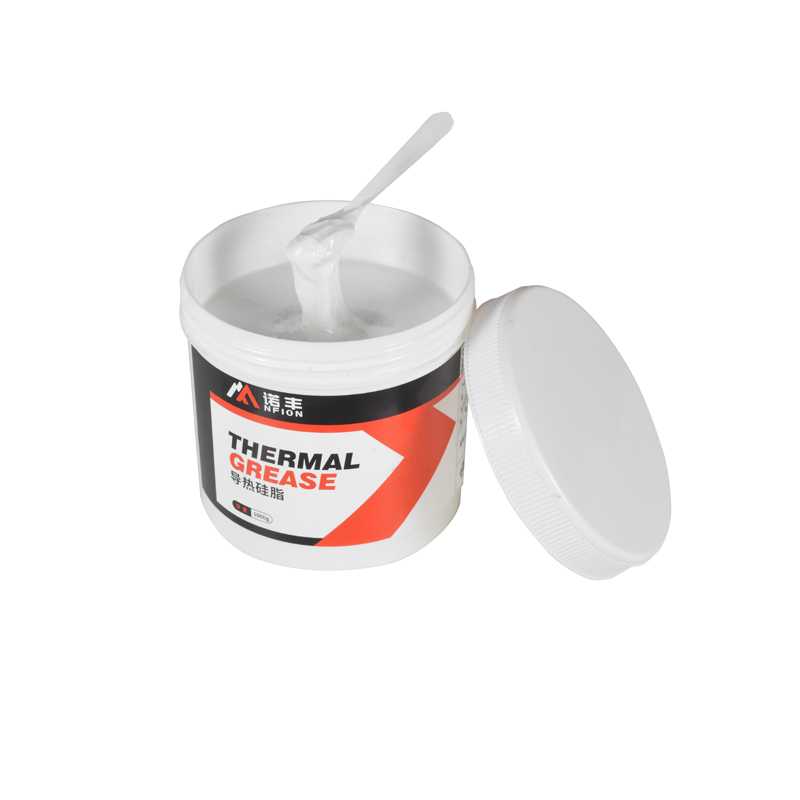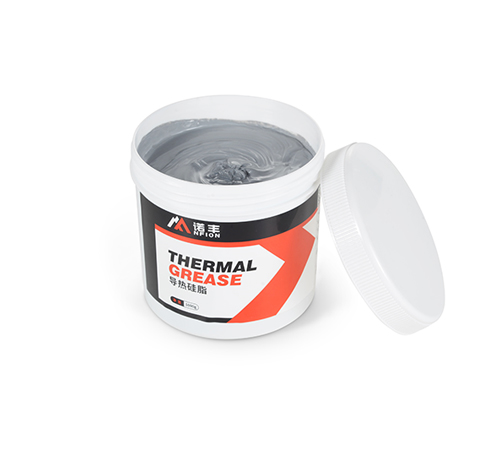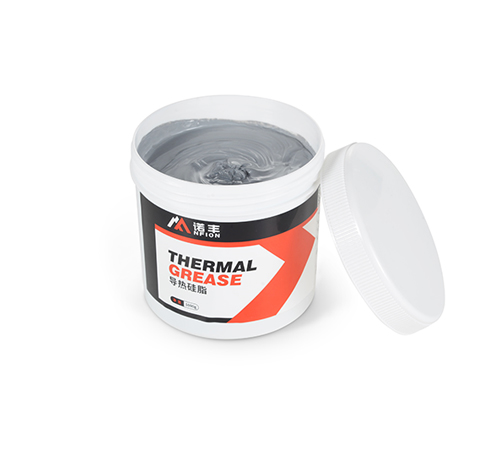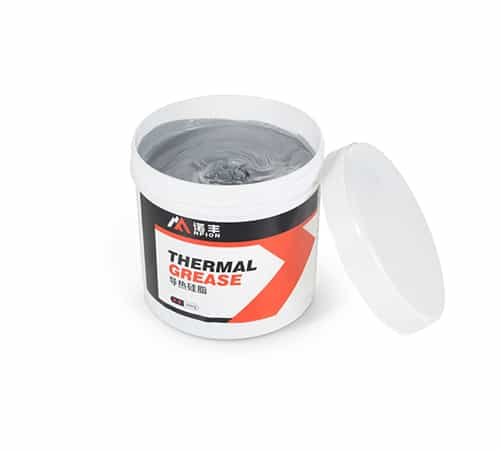The Role and Importance of Thermal Grease
Thermal grease is a high-performance thermal interface material (TIM) used to fill microscopic gaps between chips (CPU, GPU, IGBT, etc.) and heat sinks, reducing thermal resistance and improving heat dissipation efficiency. In consumer electronics, servers, automotive electronics, 5G base stations, and power modules, proper application of thermal grease is crucial. In mass production, efficient and precise coating methods improve product consistency and optimize thermal performance.
Thermal Grease Application Methods
1. Manual Application Methods (Suitable for Small-Scale or DIY Applications)
✅ Dot Method (For Small to Medium Chips)
● Method: Apply a small drop (rice-sized) of thermal grease in the center of the chip, allowing it to spread naturally when the heatsink is installed.
● Advantages: Simple, no extra tools required, minimal waste.
● Disadvantages: May not cover large chips evenly.
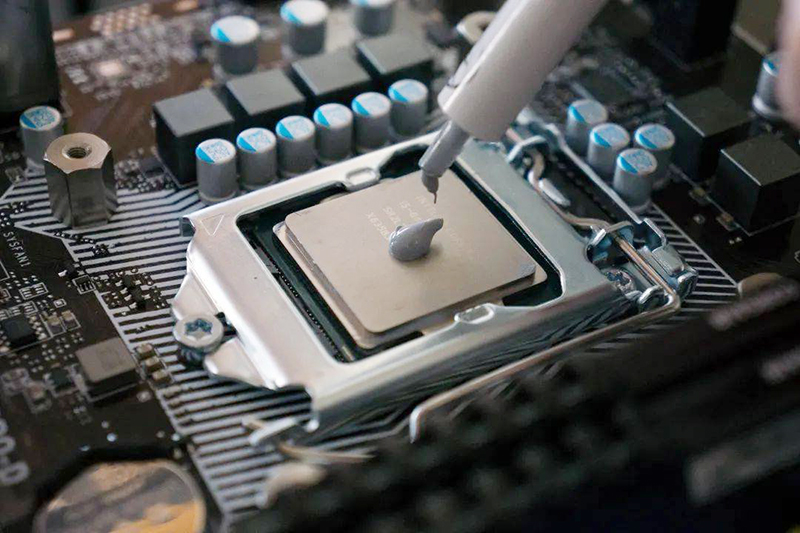
✅ Spreading Method (For Larger Chips)
● Method: Use a plastic spatula or scraper to spread the grease into a thin, even layer.
● Advantages: Ensures full coverage, suitable for manual application.
● Disadvantages: May introduce air bubbles, reducing thermal conductivity.
✅ Cross & Grid Pattern (For Rectangular or Large Chips)
● Method: Apply thermal grease in a cross or grid pattern using a dispensing gun or spatula.
● Advantages: Ensures even distribution, ideal for server CPUs and IGBT modules.
● Disadvantages: Requires high fluidity grease for smooth spreading.
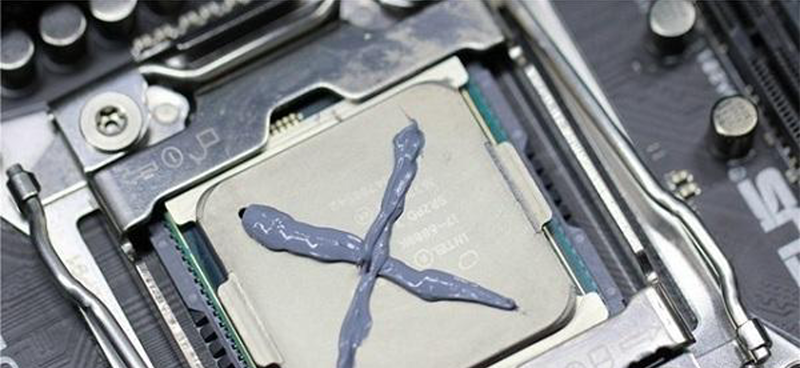
2. Large-Scale Application Methods (For Mass Production)
To enhance efficiency and consistency in industrial production, specialized equipment is used for large-scale thermal grease application, including stencil printing, automated dispensing, spraying, and roll coating.
✅ Stencil Printing – For Standardized Mass Production
● Principle: Similar to SMT solder paste printing, thermal grease is applied through a stencil.
● Application: Server CPUs, power modules, large-scale heatsinks.
● Advantages:
● Precisely controls grease thickness (e.g., 0.1mm, 0.15mm) for uniform application.
● Ideal for high-volume production, improving efficiency.
· Disadvantages:
● Requires customized stencils and equipment.
● Stencil holes must match grease viscosity to prevent clogging or overflow.
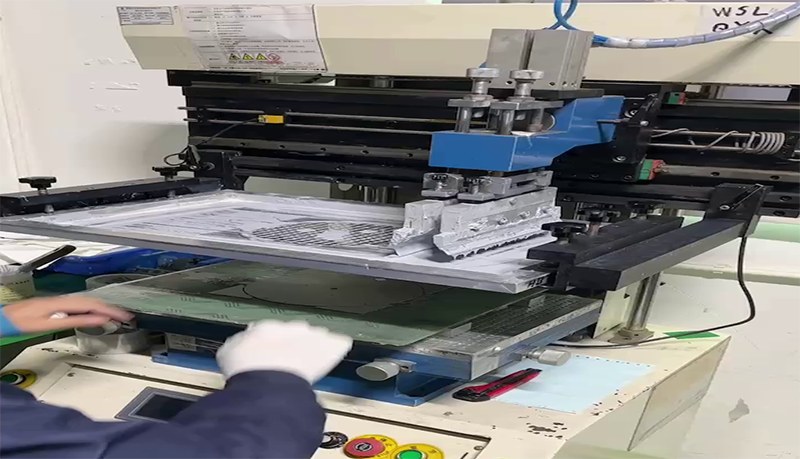
✅ Automated Dispensing – For High-Precision Applications
● Principle: Uses an automated dispenser to apply controlled amounts of thermal grease.
● Application: BGA chips, IGBT modules, power management ICs.
● Advantages:
● Programmable control ensures precise dispensing for different chip sizes.
● Compatible with high- and low-viscosity thermal greases.
· Disadvantages:
● High equipment cost, suitable for industrial production.
● Air bubbles may form, requiring optimized dispensing parameters.
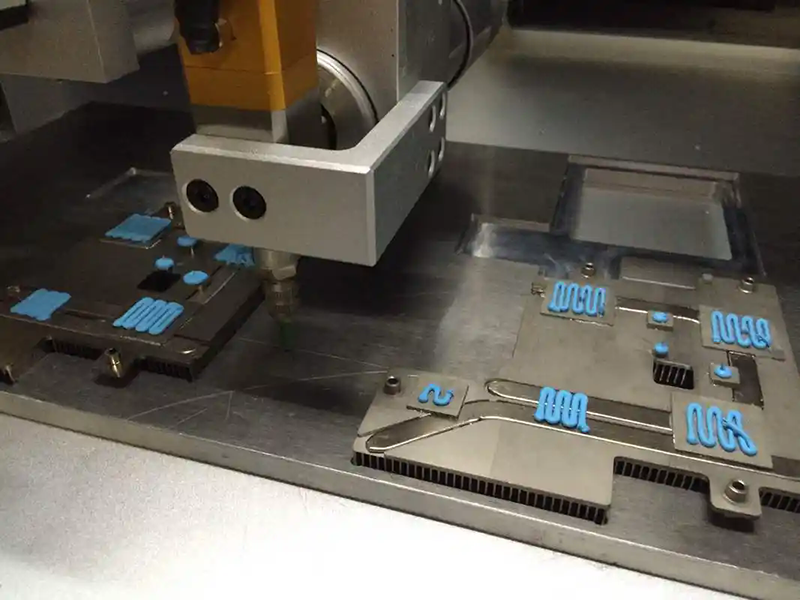
✅ Spraying – For Ultra-Thin Coatings
● Principle: Uses a spraying system to atomize and evenly coat the grease.
● Application: Thin-film cooling solutions, 5G base stations, ultra-thin chip cooling.
● Advantages:
● Creates an even, ultra-thin coating, minimizing thermal resistance.
● Suitable for large-area coverage, improving production efficiency.
● Disadvantages:
● Complex equipment calibration is required to control thickness and uniformity.
● Material waste may occur if parameters are not optimized.
✅ Roll Coating – For Large-Area Heatsink Application
● Principle: Uses a coating roller to apply thermal grease evenly on large heatsinks or substrates.
● Application: Large heatsink bases, IGBT module substrates.
● Advantages:
● Enables uniform application on large surfaces, suitable for industrial cooling solutions.
● Stable equipment operation, ideal for batch production.
● Disadvantages:
● Limited to flat surfaces, not suitable for complex heatsink designs.
Common Mistakes and Key Considerations
❌ Is Thicker Thermal Grease Better?
✅ Correct Method: Apply a thin, even layer to fill microscopic gaps only.
❌ Can You Apply New Thermal Grease Without Cleaning the Old One?
✅ Correct Method: Old grease may dry out or oxidize, reducing thermal performance. Always clean it off before reapplying.
❌ How Often Should Thermal Grease Be Replaced?
✅ Recommendation: Every 1-2 years, depending on usage conditions and grease quality.
❌ Is Manual Application More Precise Than Automated Equipment?
✅ Fact: Automated coating methods (e.g., stencil printing, dispensing) ensure better thickness control and consistency.
❌ Does One Application Method Fit All Devices?
✅ Correct Approach: Different applications require specific methods, such as spraying for ultra-thin chips and roll coating for large substrates.
Conclusion: Choosing the Right Application Method
Application
Personal PCs, DIY Builds
Recommended Method
Dot Method, Spreading Method
Server CPUs, Power Modules
Cross Pattern, Stencil Printing
Automotive Electronics, 5G Base Stations
Automated Dispensing, Spraying
Large Heatsinks, IGBT Modules
Roll Coating
For personal use, manual application is sufficient, while industrial production requires automated equipment for consistency and efficiency. Choosing the right thermal grease application method enhances heat dissipation, improves product stability, and extends device lifespan.
NFION provides high-performance thermal grease and automated application solutions. Contact us for expert support!
 CN >
CN >
